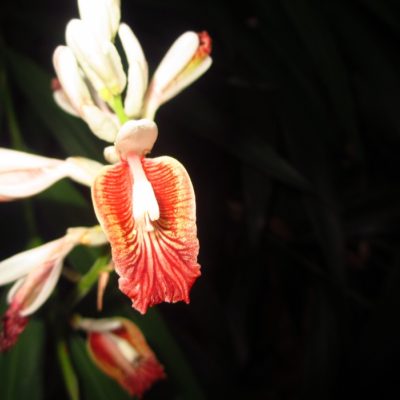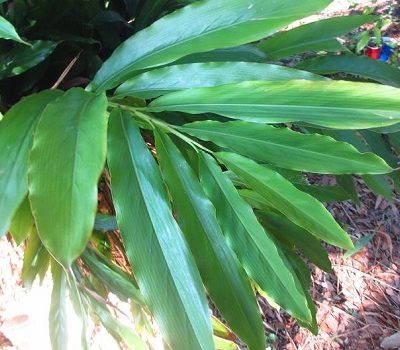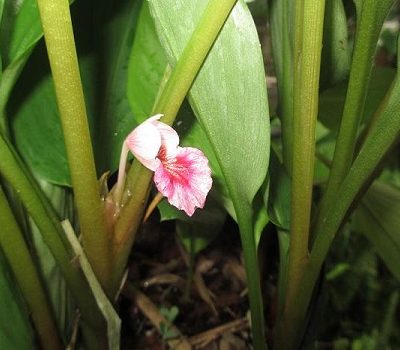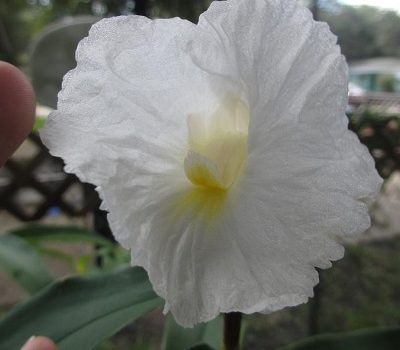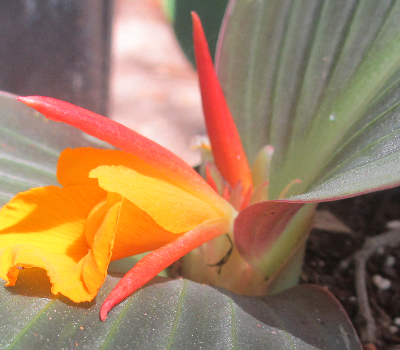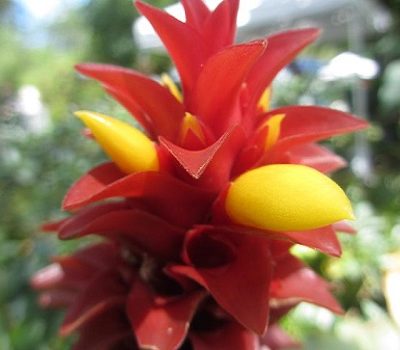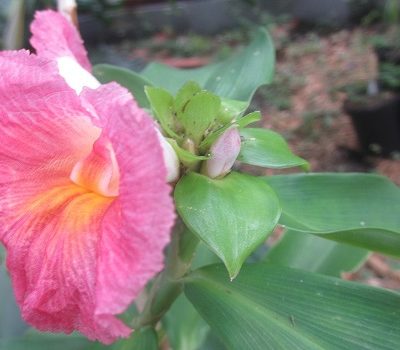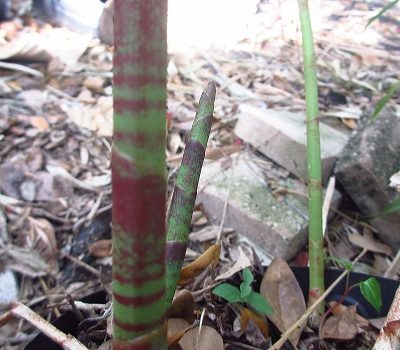When you think of plants from Africa, gingers aren’t usually the first plants that come to mind, but Siphonochilus kirkii is a real show stopper. For such a small plant, the flowers of this ginger are huge. To top it off, they’re fragrant as well.

I’ve found this ginger to be rather easy to grow, but slow to spread. Every year the same single pseudostem would emerge from the ground, but no others would follow. I began using a fertilizer with higher ratio of phosphorus, and that did the trick. Most rhizomatous plants require phosphorus to grow big healthy rhizomes. This ginger goes completely dormant, making it another good choice for gardeners in Northern climates. Just dig up the rhizome after it has lost its foliage, and store it indoors in a paper bag until Spring.
Origin: Nigeria.
Family
Zingiberaceae.
Binomial nomenclature
Siphonochilus kirkii.
Common names
African dwarf ginger.
Description
Pseudostems with lanceolate opposite leaves grow in a tight cluster from compact rhizomes. The lateral inflorescence emerges after the foliage has already begun to grow. The corollas grow sequentially, and have enormous pink labellums with a yellow spot in the center. This is easily one of the most beautiful flowers of all of the gingers.
Height
12″-18″ tall.
Temperature/Zone
Zone 9b, 400F. This plant needs warm humid conditions when it is growing, but it goes completely dormant in the Fall, making it a good choice for gardeners in colder climates. Simply dig up the rhizome when it goes dormant, and store it indoors in a paper bag until Spring.
Light
Part sun to shade.
Water
Keep them evenly moist while they are growing, and completely dry when they are dormant.
Fertilizer
I use a balanced fertilizer while they are growing. Make sure they are getting an adequate amount of phosphorus. Do not fertilize in the Winter.
Cultivation
Siphonochilus kirkii is a very easy ginger to grow. It prefers rich, well drained soil.
Pests
I have not found any pests to be a problem for this plant in Florida.

